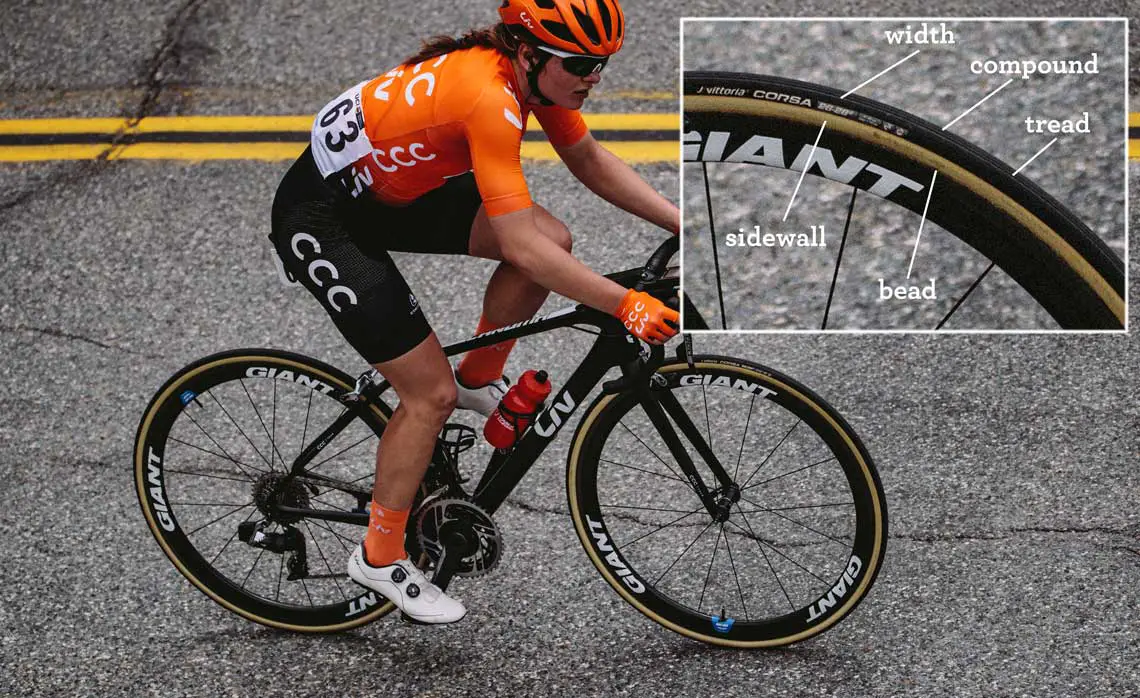Racing bike tires typically last between 1,000 to 3,000 miles. Longevity varies based on usage, terrain, and maintenance.
Racing bike enthusiasts often wonder about the lifespan of their tires. Quality and riding conditions significantly influence tire durability. Paved roads cause less wear compared to rugged terrains.
Regular maintenance can extend tire life, ensuring optimal performance. Checking tire pressure and alignment helps avoid premature wear.
Riding style also plays a crucial role; aggressive riding may reduce tire lifespan. Investing in high-quality tires can offer better longevity and performance.
Keep an eye on tread wear indicators to know when to replace your tires. Proper care ensures a safe and enjoyable riding experience.

Credit: www.theproscloset.com
Lifespan Of Racing Bike Tires
Racing bike tires usually last between 1,000 to 3,000 miles. The lifespan depends on the tire quality and usage. Soft compound tires wear out faster but offer better grip.
Hard compound tires last longer but may offer less grip. Regular checks help in determining tire wear. Always replace tires showing significant wear for safety.
Several factors affect the durability of racing bike tires. Riding style plays a major role; aggressive riding wears out tires quicker. Road conditions also impact tire life; rough roads cause more wear. Tire pressure is crucial; under-inflated tires wear faster.
Weather conditions can affect tire longevity; extreme temperatures may cause faster wear. Maintenance is key; regularly cleaning and inspecting tires can extend their life.
Signs Of Wear And Tear
Look for flat spots on the tread. Flat spots mean the tire is old. Cracks in the tread are also a bad sign. Tires with cracks can blow out. Check for wear bars. Wear bars show when the tire is done. If the wear bars are flat with the tread, get new tires.
Bumps on the sidewall are bad. Bumps mean the tire is weak. Cuts in the sidewall are dangerous too. Tires with cuts can fail fast.
Discoloration can show damage. If the sidewall looks off-color, it might be time for a change.
Influence Of Riding Conditions
Racing bike tires wear out faster on rough roads. Smooth roads are kinder to tires. Gravel and dirt roads cause more damage. Potholes can shorten tire life. Properly maintained roads help tires last longer.
Hot weather can make tires wear out quickly. Cold weather can cause tire rubber to crack. Wet roads can be slippery and wear out tires faster. Riding in rain can reduce tire grip. Snow and ice are tough on tires.

Credit: coolster.com
Maintenance Tips
Regular inspections help keep your racing bike tires in good shape. Look for any cracks or signs of wear. Check the tire tread for uneven wear. Remove debris stuck in the tire. This can prevent punctures. Doing this can extend the life of your tires. A quick check before each ride can save you from trouble.
Proper inflation is key for tire health. Use a reliable gauge to check tire pressure. The correct pressure helps tires last longer.
Too much air can make the ride rough. Too little can cause damage. Check the manufacturer’s recommendations for the right pressure. Inflate your tires regularly for the best performance.
Choosing The Right Tire
Bike tires come in different compound types. Soft compound tires offer more grip. They wear out faster than hard compounds. Hard compounds last longer but have less grip. Medium compounds provide a balance between grip and durability. Choose the compound based on your riding style.
Tire width affects your bike’s performance. Narrow tires are faster on smooth roads. Wider tires offer more comfort and grip.
They are better for rough terrains. Consider your riding conditions. Choose the tire width that suits your needs.
Impact Of Riding Style
Aggressive riders often wear out tires faster. Sharp turns and high speeds cause more friction. This leads to quicker tire degradation. Frequent braking and accelerating also impact tire life. Tires may last only a few months for aggressive riders.
Casual riders usually experience longer tire life. Gentle riding reduces wear and tear. Tires can last up to a year or more.
Smooth rides and low speeds help maintain tire quality. Occasional checks keep tires in good condition.
When To Replace Tires
Cracks and cuts on the tire are signs. Bulges on the sidewalls mean damage. Tread wear indicators can show when to replace. Any punctures should be checked quickly. Always check for embedded objects.
Slower speeds can signal tire problems. Less grip on turns means it’s time. Frequent flats are a bad sign. Wobbly rides feel unsafe. Slipping during wet rides shows poor performance.

Credit: www.bicycling.com
Extending Tire Life
Rotating tires helps them wear evenly. Uneven wear can shorten tire life. Switch front and back tires regularly. This practice can improve tire longevity. Check tire pressure often. Proper pressure reduces uneven wear.
Avoiding hazards can extend tire life. Watch out for sharp objects. Avoid potholes and gravel roads. These can cause tire damage. Clean tires after every ride. Dirt and debris can wear down rubber. Inspect tires for cuts or punctures.
Frequently Asked Questions
When Should I Replace My Race Tires?
Replace race tires after 100-200 miles or when tread wear indicators appear. Inspect for cuts, punctures, or bulges.
How Long Do Tires Last In A Race?
Tires in a race typically last between 50 to 200 miles. Their lifespan depends on track conditions, driving style, and tire type. Regular monitoring and timely changes ensure optimal performance.
How Often Should I Replace My Bike Tires?
Replace bike tires every 2,000-3,000 miles. Check for wear, cracks, and punctures regularly. Prioritize safety.
Do Racing Tires Last Longer?
Racing tires do not last longer. They wear out quickly due to their soft rubber compound designed for maximum grip. Regular replacement is necessary for optimal performance.
How Long Do Racing Bike Tires Last?
Racing bike tires typically last between 1,000 to 3,000 miles, depending on usage and road conditions.
Conclusion
Choosing the right racing bike tires impacts performance and longevity. Regular maintenance can extend their lifespan. Inspect tires frequently for wear.
Replace them when necessary to ensure safety and optimal performance. You can enjoy a smoother and more efficient ride by understanding tire care.
Prioritize quality tires for the best cycling experience.

Steven is a professional cyclist and his passion is cycling. He has been cycling for the last 6 years and he loves using bikes while outing as well. Based on his experiences with the different types of bikes; he is sharing his opinions about various bikes so that a beginner can start right away. Find him on Twitter @thecyclistguy Happy Biking.


Leave a Reply